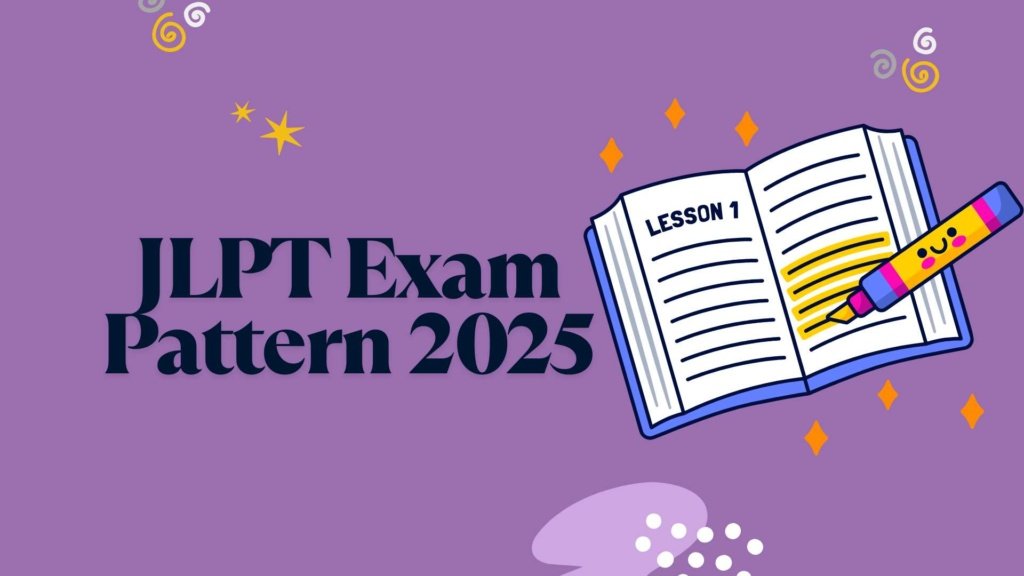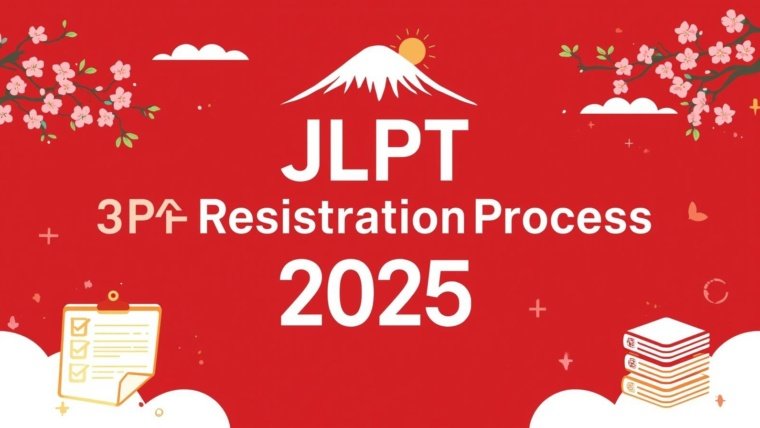The Japanese Language Proficiency Test (JLPT) remains the most trusted certification for learners and professionals aiming to validate their Japanese language skills. With increasing global interest in Japanese careers, studies, and cultural exchange programs, understanding the JLPT exam pattern in 2025 has become more crucial than ever. This article will provide a comprehensive level-wise breakdown of the JLPT, insights on the new pattern (if any), and a detailed preparation roadmap to crack the exam efficiently.
📘 For up-to-date JLPT news, official test guidelines, and registration details, be sure to visit the JLPT official site.
What is the JLPT?
The JLPT (Japanese Language Proficiency Test) is a standardized test conducted by the Japan Foundation and JEES to evaluate the proficiency of non-native speakers in Japanese. It has five levels — N5 (beginner) to N1 (advanced) — each assessing listening, reading, vocabulary, and grammar skills.
Let’s now explore the JLPT exam pattern for each level and how to prepare accordingly.
JLPT Exam Pattern 2025: Level-wise Comparison
JLPT 2025 features five levels (N5 to N1), each testing language proficiency through Listening, Vocabulary, Grammar, and Reading. Difficulty increases from N5 (basic) to N1 (advanced), with varied question formats.
N5 – Basic Understanding
The JLPT exam pattern for N5 is tailored for absolute beginners taking their first step into Japanese language learning.
- Sections Included:
- Language Knowledge (Vocabulary + Grammar)
- Reading
- Listening
- Language Knowledge (Vocabulary + Grammar)
- Total Duration: 90 minutes
- Question Format: Multiple-choice questions only
- What It Tests:
- Hiragana and Katakana
- Around 100 basic Kanji
- Common vocabulary and sentence patterns used in everyday conversations
- Hiragana and Katakana
Prep Tip: Use flashcard tools like Anki, JLPT-specific apps, and beginner quiz books to build your vocabulary and recognize kanji quickly. Regular short study sessions are more effective than cramming.
📘 Curious about the JLPT’s structure? Check out our in-depth article on the JLPT format explained to understand the exam sections, timing, and scoring in detail.
N4 – Elementary Proficiency
The JLPT exam pattern for N4 builds upon the basics learned in N5, introducing more kanji, a wider vocabulary, and deeper grammar comprehension.
- Sections Included:
- Language Knowledge (Vocabulary + Grammar)
- Reading
- Listening
- Language Knowledge (Vocabulary + Grammar)
- Total Duration: 105 minutes
- Question Format: Multiple-choice questions
- What It Tests:
- Approximately 300 Kanji
- Around 1,500 vocabulary words
- Sentence patterns and grammar structures commonly found in everyday conversations, social situations, and basic reading materials
- Approximately 300 Kanji
Prep Tip: Improve your reading skills by going through Japanese children’s books, manga with furigana, and JLPT N4 practice tests. Consistent reading builds speed and comprehension.
📘 Confused about the exam format? Explore our detailed guide on the JLPT Structure to learn about sections, duration, and scoring patterns.

N3 – Intermediate Bridge
The JLPT exam pattern for N3 acts as a transition point between elementary and advanced levels. This level introduces learners to more complex grammar structures, longer reading passages, and faster-paced listening.
- Sections Included:
- Language Knowledge (Vocabulary + Grammar)
- Reading
- Listening
- Language Knowledge (Vocabulary + Grammar)
- Total Duration: 140 minutes
- Question Format: Multiple-choice questions
- What It Tests:
- Around 650 Kanji
- Approximately 3,750 vocabulary words
- Understanding of news articles, basic editorials, and fluency in everyday spoken Japanese
- Around 650 Kanji
Prep Tip: Practice regularly with resources like NHK News Easy, JLPT N3 grammar books, and official mock exams. Focus on summarizing articles and shadowing audio to improve fluency.
N2 – Business-Level Proficiency
If you’re aiming to work in a Japanese corporate or academic environment, the JLPT exam pattern for N2 is a key milestone. This level tests your ability to comprehend complex texts and spoken Japanese delivered at near-native speed.
- Sections Included:
- Language Knowledge (Vocabulary + Grammar)
- Reading
- Listening
- Language Knowledge (Vocabulary + Grammar)
- Total Duration: 155 minutes
- Question Format: Multiple-choice questions
- What It Tests:
- Around 1,000 Kanji
- Approximately 6,000 vocabulary words
- Proficiency in technical, abstract, and formal content such as essays, reports, and news commentary
- Around 1,000 Kanji
Prep Tip: Study with JLPT N2 grammar lists and advanced vocabulary decks. Regularly read Japanese newspapers like Asahi Shimbun and take time-bound mock tests to boost reading speed and comprehension accuracy.
📘 Want to stay updated on exam changes? Explore our complete breakdown of the JLPT Exam Format 2025 to prepare effectively for every level.
N1 – Advanced Fluency
The N1 level is the highest and most challenging tier in the JLPT exam pattern, designed for learners seeking academic, research, or high-level professional roles in Japan. It demands complete fluency and the ability to grasp complex linguistic nuances.
- Sections Included:
- Language Knowledge (Vocabulary + Grammar)
- Reading
- Listening
- Language Knowledge (Vocabulary + Grammar)
- Total Duration: 170 minutes
- Question Format: Multiple-choice questions
- What It Tests:
- Around 2,000 Kanji
- Up to 10,000 vocabulary words
- Comprehension of literary works, legal or academic documents, and high-speed spoken Japanese in diverse settings
- Around 2,000 Kanji
Prep Tip: Diversify your study material — include Japanese novels, academic papers, opinion editorials, and regularly listen to Japanese radio or expert podcasts to fine-tune your ear for advanced language use.
📘 Curious about how the JLPT is structured? Discover the full details in our guide to the JLPT Test Format—covering section breakdowns, timings, and scoring.
JLPT Exam Pattern: What’s New in 2025
While the core JLPT exam pattern remains consistent in 2025, there are a few subtle but important updates every aspirant should be aware of. These shifts reflect the evolving nature of language use and the increasing role of digital tools in test preparation.
- Digital-First Prep:
More coaching centers and e-learning platforms are now using AI-powered analytics to assess mock test performance in real time. This helps students pinpoint weak areas instantly and optimize their study plans. - Listening Section Updates:
The 2025 pattern includes faster-paced conversations and native-level speech with less repetition. Candidates must sharpen their ability to catch nuances and infer meaning from context quickly. - Reading Section Emphasis:
Expect more inference-based questions in the reading section. Rather than just scanning for facts, you’ll need to interpret tone, opinion, and intention — skills closely tied to real-world Japanese usage.
Tip: Practice with adaptive platforms and up-to-date mock tests that mirror the 2025 format. Building familiarity with natural language speed and complex reading comprehension is key to success.
📆 Planning ahead for your JLPT journey? Check out the official updates and timelines with our guide to JLPT 2025 to stay on track for N5–N1 success.
Prep Plan Based on JLPT Exam Pattern
Success in the JLPT doesn’t just come from hard work — it requires smart, strategic preparation aligned with the JLPT exam pattern. Here’s a five-step study plan that works for every level, from N5 to N1:
1. Daily Vocabulary & Kanji Practic
Consistent exposure to words and characters is critical. Depending on your level, aim to revise 10–20 new vocabulary terms and kanji daily.
Use tools like Anki, WaniKani, or JLPT-focused apps with spaced repetition systems (SRS) to retain what you learn long term.
2. Timed Mock Tests
Simulating the real test environment helps you adjust to the JLPT exam pattern under pressure.
Take weekly mock tests using official JLPT samples or trusted prep books. Time yourself strictly to build exam stamina and improve pacing.
3. Listening Drills
Since listening is a key component at all levels, immerse yourself in native-level Japanese audio daily.
Practice with Japanese dramas, podcasts, NHK news, and listen with transcripts to connect sounds to meaning. Shadowing (repeating after the speaker) also boosts fluency.
📘 Just starting out? Kickstart your preparation with our comprehensive guide to the JLPT Japanese Test for Beginners—designed specifically for N5 learners.
4. Reading for Context
Don’t just read — understand and interpret. This is essential for tackling the reading section of the JLPT exam pattern, especially in levels N3 to N1.
Read blogs, manga, news sites, or short stories depending on your level. Focus on context clues, transition words, and the writer’s intent.
5. Join a JLPT Prep Course
A structured course designed around the JLPT exam pattern can drastically improve your efficiency, especially if you’re stuck or plateauing.
Look for courses taught by certified Japanese instructors that include mock tests, grammar drills, and level-specific feedback.
📘 Working toward advanced fluency? Get expert tips and structured prep in our guide to the JLPT Japanese Test N2, designed for serious learners.
FAQs on JLPT Exam Pattern 2025
Q1. Has the JLPT exam pattern changed in 2025?
A: There are no major changes in structure, but recent trends include more complex listening and reading formats. It’s important to stay updated through official JLPT announcements.
Q2. How many sections are there in the JLPT?
A: There are three core sections in most levels: Language Knowledge (vocabulary and grammar), Reading, and Listening.
Q3. Is the JLPT exam pattern different for each level
A: Yes, while the format remains consistent, difficulty, vocabulary range, kanji count, and comprehension depth increase with each level.
Q4. Can I prepare for the JLPT exam without coaching?
A: Yes, many learners succeed through self-study. However, understanding the JLPT exam pattern clearly and following a structured plan is essential.
Q5. How can I improve my JLPT score quickly?
A: Focus on mock tests, improve vocabulary daily, follow the JLPT exam pattern, and track your progress weekly.
Final Thoughts
Cracking the JLPT in 2025 demands smart strategy, commitment, and understanding of the JLPT exam pattern for your level. Whether you’re aiming for basic conversation skills or professional fluency, aligning your prep with the test format is key to success. Begin your journey today, and remember — consistency is your best friend in mastering Japanese!



